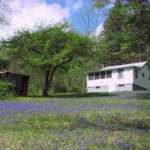I picked this book up as I was getting prepared to move to Colorado. I knew nothing about elk other than seeing them a few times throughout my summer trip through the national parks system long ago when I graduated high school.
The book is plainly written for the average Joe who wants to go out west and hunt for elk. Matt is a Colorado native who has local knowledge, and that was what I was hoping to glean from the book. It covers most of the bases with packing lists and making sure to hammer on things that are important such as land access and corner crossing as well as fitness involved in hunting the mountains looking for these giant cervids. It’s 179 pages of easy reading, especially if you’re driven by the need to succeed in the elk timber you should be able to read it in three decently relaxed sessions.
The book is packed with good resources although the color photos turned out a little grainy in the paperback edition as they were converted to black and white. While the book is written well and sectioned off into easily digestable chunks perhaps it could use a second edition at some point to fix some spelling and grammar errors that to me were glaring, but that’d kind of not the point of the book, now is it? I’d have liked more information on elk behavior and being able to locate the critters — but Matt’s information on using GPS chips for land ownership and some of the information that they provide more than makes up for this, as it’s the tactic I often employ with whitetail back east. He makes multiple mentions of the use of a fourwheeler and Argo type vehicle but also mentions that the land is public. This is a somewhat dangerous assertion without clarifying what type of land he’s on, whether it’s national forest of BLM land. There’s no mention that perhaps some different tracts of public land are more accessible than others. While it may be pedantic but the use of the word ‘wilderness’ in the book is definitely little ‘w’ wilderness as the lands covered under the Wilderness Act generally speaking do not allow for mechanical conveyances. This is important for the perhaps less fit audience that may take his advice going into the woods. Fines are steep for getting caught where you’re not supposed to be on the back of a quad.
I have no doubt that you can be successful if you’re a transitioning whitetail hunter by reading this book if you already have enough wilderness skills and you’re plenty familiar with backcountry camping. Unfortunately the book left me feeling a little wanting. It’s an excellent base, but after having chased whitetail for nearly two decades back east as a long range day packer, I’d have liked some more advanced tactics and elk patterning techniques. I definitely didn’t want his Colorado specific honey holes, but some more general things about where elk like to hang out would have been nice.





